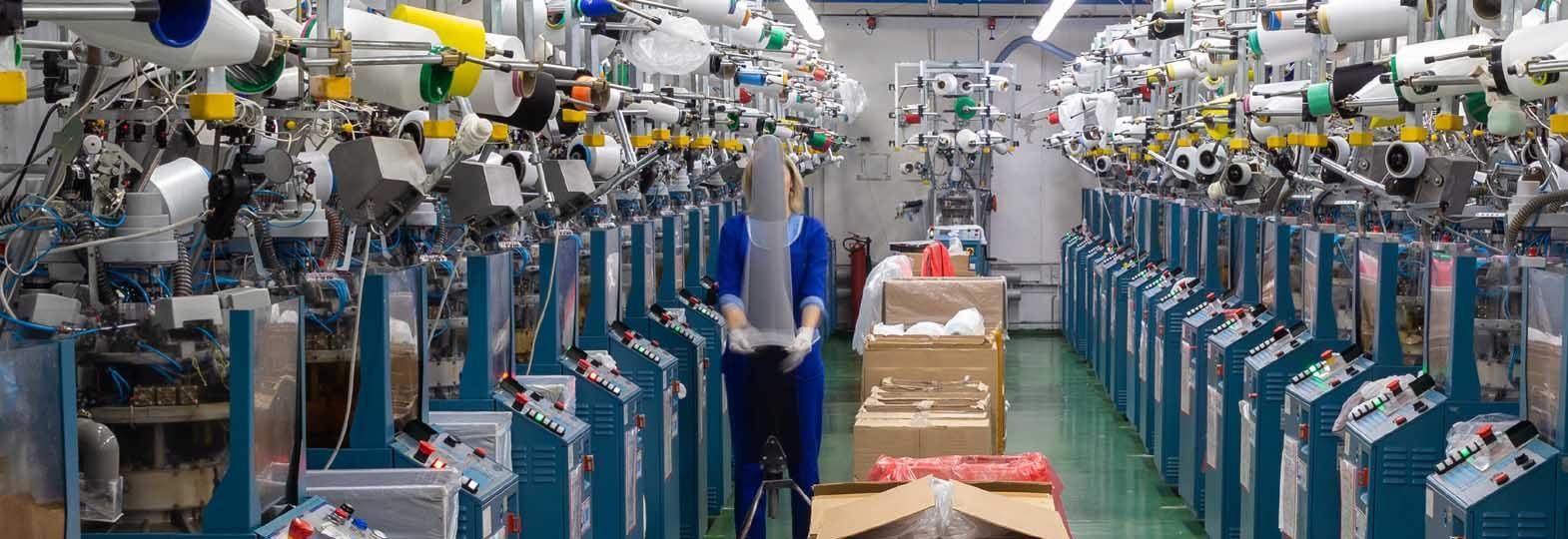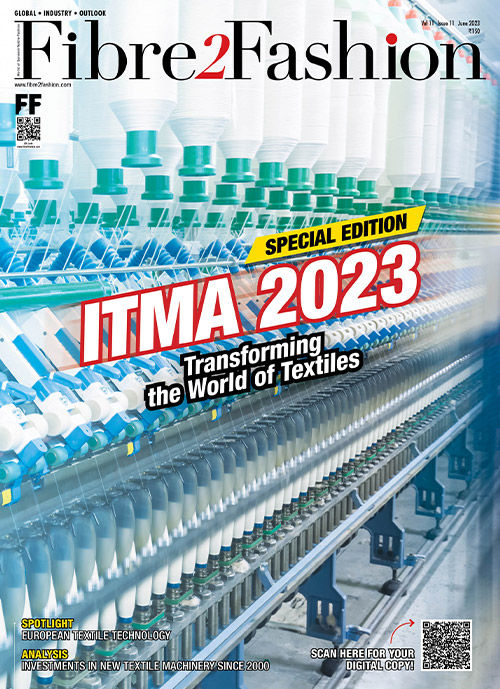In the current climate, the world of business is proving fiercely competitive for many manufacturers in the textile industry. As such, many companies look for ways to reduce their production costs while maintaining standards and product yield. More recently, the rising costs of energy are adding to the issue, driving costs higher and lowering profits. Cost-effective yet fruitful investment in low-energy practices and technologies needs to be balanced with maintaining a high-quality output. Nowadays, it is possible to invest in energy-efficient practices that also benefit the enterprise further in terms of reducing materials and water used as well as increasing company productivity.
Though not yet on the same scale as the Industrial Revolution some 200 to 300 years ago, the textile industry is advancing at a huge rate – and it needs to. The growth in the textile industry is due to many reasons, including an increase in e-commerce platforms and increased demand for fashion. There are three main aspects to the industry: design, production and distribution. Lots of processes like weaving, crocheting and knitting, to name a few, are used to make semi-finished and finished goods in clothing, apparel, medical, bedding, furnishings and more.
The Machinery Market
The textile machinery market incorporates all of the equipment and machines used in the manufacture of textiles from production, through processing, and in finishing. Manufacturers make use of various machines, including weaving machines, knitting machines, dyeing machines, spinning machines, and finishing machines. These technologies all have an important role to play in enabling textile manufacturers to keep up with demands while producing high-quality products at a rapid rate. Textile machinery and equipment are, therefore, essential tools for manufacturers.
Increased Demand and Major Industry Drivers
The textile machinery market is highly influenced and driven by the demand for high-quality products in a short time frame. This has led to increased adoption of textile industry automation and advancements in technology to produce more sustainable products both for demand and cost-saving reasons.
However, it is the cost of machinery that is one of the biggest market restraints. In some areas, a lack of adequate regulation is also a mitigating factor. However, new opportunities are presenting themselves thanks to advancements in technology, for example, technologies using the IoT (Internet of Things) as well as smart machinery. These are all in their early stages but are showing promising signs for industry development and progression.
Challenges Facing the Textile Industry
Despite new technologies and opportunities becoming available, there are several challenges affecting the market. Firstly, newcomers are discouraged due to the cost of machinery. Scaling a textile business requires substantial investment and so it is becoming increasingly difficult for companies, especially Micro-, Small and Medium-sized Enterprises (MSMEs), to progress. Those who start small are finding the gap is much greater than anticipated between returns and the ability to afford new technologies.
Another major challenge in textile machinery is standardisation – or a lack thereof. It is almost impossible to count the different equipment, machinery and materials in the industry, and with manufacturing taking place in all corners of the globe, implementing international standards is becoming more and more important. International standards do exist1, but for many, they are simply guidelines.
Arguably the biggest challenge faced by many, especially the SMEs (small and medium-sized enterprises) that dominate the industry, is the cost of energy. All textile and textile machinery manufacturers need to concern themselves with improving the energy efficiency of their methods and machines. This is especially important when energy prices are particularly volatile.
There are many different approaches to lowering costs and improving energy efficiency. However, SMEs are often limited in terms of resources to achieve this, hence the need for sourcing low-cost but high-tech machines.
Evolution of Textile Machinery
As textile machinery has advanced and evolved, the need for skilled labour has lowered. The once onerous and person-heavy textile industry is now achieving the same results by using machinery alone. And while many consumers might debate this job displacement, many are also keenly interested in machinery that increases sustainability.
Nowadays, many big companies are recognising the demand for eco-friendly and sustainable products and reacting accordingly. Like always, it is harder for SMEs to keep up. Those who can progress quickly to meet this demand, not only see their sales rise but their profits too as sustainable practices benefit waste reduction, energy and water saving.
Sourcing High-Tech, Low-Cost Textile Machinery
Since the quality and speed of textile production increases with newer machines, upgrading them paves the way for higher efficiency, easier maintenance, quicker speeds, and improved accuracy and performance. As such, companies can produce higher quality items at an increased rate while also enjoying fewer running and labour costs due to logical methods of operation and high-performing machines.
The most profitable companies around the world are seeing the value of enhancing their machines in terms of productivity, quality and reduced energy costs. Moreover, they are making their processes more sustainable and environmentally friendly, which consumers are looking for more and more. With the most up-to-date machines on board, textile manufacturers can adjust their production quickly to respond to market trends and maintain their competitive edge.
As a result, machinery manufacturers are constantly improving their machines to aid textile companies and their need to increase production, flexibility and sustainability, whilst also decreasing energy consumption.
Defining Low-Cost Producers
Low-cost production does not always equate to high-quality goods. However, low-cost does not have to mean cheap either. A low-cost producer is one that will have a high-profit margin compared to its competitors and thus, a balanced, low-cost strategy is essential in order to have a market advantage.
A low-cost producer will execute their low-cost strategy by using economies of scale. When consumers are more sensitive to price changes, they are more likely to shop where quality vs price is well-balanced. For the textile industry, high-quality goods and low prices equate to more sales. For this reason, textile manufacturers look for ways to keep their costs down while making high-quality products.
Energy Use
Energy, as you might expect, is one of the largest components of industrial activity. With fuel price rises and a global energy crisis, it is important for companies to look at their energy use.
By and large, the textile industry is not particularly energy intensive compared to other manufacturing industries like petrochemicals, steel, aluminium, fertilisers, brick making, cement and engineering, for example.
That said, the textile industry does use a large amount of fuel and electricity and remains one of the biggest energy-consuming industries globally.2 In terms of statistics, 38 per cent of the textile industry’s energy consumption is from chemical processing, 34 per cent in spinning, 23 per cent in weaving and 5 per cent in other purposes. Mostly, this energy is in the form of electricity. It is the most common source of power for machines, temperature control systems and cooling, equipment and lighting. Otherwise, the industry also uses gas, coal and oil. These days governments, companies and consumers are all aware of just how problematic this intensive usage is.
Energy management and conservation is, therefore, an important part of the present-day textile industry as we battle a global energy crisis. Energy conservation can be achieved through various means. Besides machine modification, using proper chemical mixes and new technologies can save energy.
Like many industries, companies in the textile industry are working with governments to explore new energy resources like tidal power, solar power, nuclear power and wind power, though things are at somewhat of a standstill due to high set-up costs.
Though little can be done about the source of energy at the current time, companies can work on reducing their energy consumption in other ways. For instance, choosing bulk products and avoiding small volume, multi-line productions that increase energy consumption.
Besides being an important part of the environmental strategy, energy efficiency is a great way of lowering costs. Being more energy efficient is also useful for marketing purposes as the company reduces its costs as well as its emissions of pollutants. That said, it can be difficult for SMEs to reduce energy use compared to larger companies, though some countries do have government programmes and policies to help.
Spinning Processes and Energy Use
In the spinning process, the largest type of energy consumption is electricity. This is particularly true for systems spinning cotton. If a spinning plant uses a cotton spinning system to produce raw yarn without dyeing or fixing the product, the energy used will likely include steam production as a part of humidification for cooler seasons. A plant’s fuel, therefore, largely depends on its climate and location.
If a plant is spinning other fibres or finer yarn, it will use more energy. Also, weaving yarns as opposed to knitting yarns, will use more energy due to the higher amount of twisting needed. They will also use more energy overall because they take longer to produce. Overall, this means that for the same length of yarn, weaving yarn will take more energy to produce than a knitting yarn. What’s more, the production of combed yarn will use an even greater amount of energy due to the additional combing process during production.
Wet Processing and Energy Use
The biggest energy consumer of the textile industry is wet processing. This is because it uses lots of thermal energy in the form of heat and steam. The amount of energy used depends on what is being produced – whether it is cloth, fabric, yarn or fibre. It also depends on the type of machine, the type of process, and the final product.
Though wet processing does use a lot of thermal energy, a lot of it is also lost. This happens with equipment releasing heat, the loss of wastewater, idling, evaporation, loss when recovering condensate and over-drying of products, for example.
Improvement Opportunities
Given that the production of clothing and footwear alone is responsible for 10 per cent of global greenhouse gas emissions,3 it is crucial that the textile industry looks at ways to reduce its energy consumption. To put it into context, this figure is greater than all maritime shipping and international flights combined.4 As startling as this is, it is also important to realise that this does not include other environmental impacts like textiles that end up in landfill and wastewater.
Improvements can be made everywhere—whether that is through the optimisation of processes or by retrofitting improvements to existing machinery. Where possible, the best case is often to replace machines with high-tech machinery that has less of an impact.
However, because new technology is the most expensive option and many companies simply cannot afford the upfront costs, retrofit measures are often the first choice, particularly with SMEs. That said, if companies can afford replacements, they will reap the benefits of material saving, water saving, less wastewater, less waste, higher-quality products and less redoing. This makes the purchase of new technology much more economically justifiable.
There are further opportunities for improvements on a more individual scale. For example, textile plant engineers at different types of plants will have different variables and as such, different opportunities for energy saving and cost saving. These might come from the type of fabric, yarn or fibre, the product specifications, raw material qualities, the fabric weight and even the geographical location of the manufacturing plant. In the developing world, there will be a huge difference in opportunities for energy saving compared to the developed world.
The biggest opportunity for improvement has to be through the use of renewable energy. When plants cannot get their electricity from renewable sources, there are still things they can do closer to home to make use of the renewable energy available to them. This includes:
• Installing turbo ventilators – these are an alternative to motor-driven ventilators. They operate using natural wind energy and are affordable, efficient and simple. They are also cheap to maintain.
• Using solar power – the average rooftop space of a textile plant has plenty of space to accommodate solar panels to aid in energy reduction. Though there will be an initial outlay, solar panels will eventually be a worthwhile investment.
• Solar drying – drying fabrics by exposing them to the sun is one of the oldest ways people have harnessed the sun’s energy. Using direct solar energy to dry fibres is one way textile plants can save energy and costs. It does depend on the plant’s location, however.
• Using solar heat – thermal energy from the sun can be used to heat the water used for curing, dyeing, drying and washing, for example
Future Possibilities
A study5 has shown that waste produced by the textile industry, cotton waste to be precise, could soon be used to produce thermal energy. Cotton briquettes made from waste materials have been shown to have a heating value of 16.90 MJ/kg. This means it could be a viable energy alternative.
Energy Conclusions
Energy usage is one of the textile industry’s biggest cost factors. Improving energy efficiency is needed both for reducing costs, particularly when energy prices are volatile, and for environmental reasons. Yet, many textile plants are not yet taking up cost-effective energy-reducing measures due to a lack of information on their availability and how to implement them. This is especially true for SMEs, the category to which most textile plants belong. In particular, it is SMEs that need support with knowing how to adapt using new technologies.
Looking to the Future: What can Textile Manufacturers do?
To make the most of opportunities, companies should, therefore, consider the following ideas:
1. Develop a short, medium and long-term plan and review it regularly. This should include an analysis of the market, the competitors, the environment and the resources. It should have targets that are achievable and time-bound.
2. Introduce practise to aid continuous improvement. This might mean getting ISO certifications and producing SOP (Standard Operating Procedure) documents.
3. Cut out the dispensable. If an activity is not adding value, it can be cut. This means reducing bureaucracy and paperwork and it might mean selling old equipment and materials that are no longer needed. Anything that can be outsourced should be looked into to see if this will reduce costs to increase profits.
4. Review MOH (manufacturing overhead) and labour costs. This might mean looking into high-tech automated machines but it might also mean looking at the activities carried out by employees to ensure efficiency and productivity.
5. Cut down energy loss. Facilities and machinery should be checked regularly for energy loss and leakages, whether steam, fuel or electricity. This might mean checking pipes, compressors, motors, generators, transformers and boards, among others.
6. Invest in equipment and machinery. As technology moves on, so does its energy efficiency. Businesses should consider all tools, equipment and machinery as an investment rather than an expense. If equipment is deemed obsolete, replace it. A machine that is in a poor condition will create more energy and monetary loss than it will benefit. New equipment should be looked at in terms of its potential scaling, material waste, quality produced, flexibility and speed.
Conclusion
The focus of the textile industry has been on the deliverable or the end product. However, focus has been shifting towards processing and how this can be improved. Companies are looking for low-cost solutions but the best technology and many are realising that one answer lies in energy. The figures are startling and it is clear that the industry needs to look towards a more energy-efficient future to become sustainable. Thankfully, there is an abundance of innovation and with some investment, businesses can adopt high-tech practices that lower their energy consumption, increase the quality of their products and lower their costs.











Comments